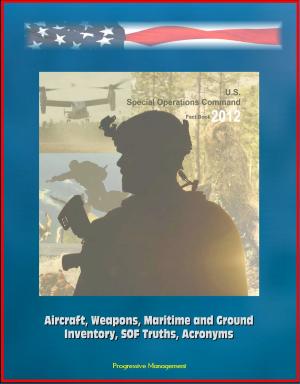Regime Change and the Role of Airpower: South Vietnamese Regime Change in the Vietnam War, President Diem Coup, President Kennedy and Johnson, American Regime Change Causal Theory and Mechanism
Nonfiction, History, Military, Vietnam War, Asian, Aviation| Author: | Progressive Management | ISBN: | 9781370393374 |
| Publisher: | Progressive Management | Publication: | September 27, 2016 |
| Imprint: | Smashwords Edition | Language: | English |
| Author: | Progressive Management |
| ISBN: | 9781370393374 |
| Publisher: | Progressive Management |
| Publication: | September 27, 2016 |
| Imprint: | Smashwords Edition |
| Language: | English |
This important report has been professionally converted for accurate flowing-text e-book format reproduction. Drawing from the vision of airpower theorists and building on insights gained from studies on various regime changes, this study advances a theory of regime change and outlines a strategy for the use of airpower. To remain in power, regimes must continue to provide goods to the group of people responsible for its rise to power—the winning coalition. Different types of regimes rely on different types of goods to satisfy their winning coalition. This study advances the hypothesis that adversely affecting these goods will create policy failure, increase dissatisfaction among the winning coalition, and cause members to seek out a new coalition and regime to provide the lost goods. Additionally, since many regimes supply goods to third parties to retain their support, an additional hypothesis was introduced to account for the influence of international support.
Analysis of an American and South Vietnamese regime change demonstrated that overthrowing a particular type of regime is directly related to attacks on certain types of goods, thus providing a better model for airpower strategists planning a regime change. The theory outlined in this thesis is founded on theoretical limits for regime types—and few regimes actually exist at these extremes. Still, the more democratic a regime, the more airpower should focus on public goods. Conversely, the more autocratic a regime, the more airpower should attack private goods.
Chapters 2 and 3 propose a theory of regime change during war that explains why different types of regimes respond to attacks on different types of targets. Chapters 4 and 5 then describe a democratic and an autocratic regime, respectively, to test the theory against the limits of the proposed political spectrum. Analysis of these case studies leads to some conclusion about the validity of the theory. Chapter 6 provides some analysis and implications for the proposed explanation of regime change during war.
This important report has been professionally converted for accurate flowing-text e-book format reproduction. Drawing from the vision of airpower theorists and building on insights gained from studies on various regime changes, this study advances a theory of regime change and outlines a strategy for the use of airpower. To remain in power, regimes must continue to provide goods to the group of people responsible for its rise to power—the winning coalition. Different types of regimes rely on different types of goods to satisfy their winning coalition. This study advances the hypothesis that adversely affecting these goods will create policy failure, increase dissatisfaction among the winning coalition, and cause members to seek out a new coalition and regime to provide the lost goods. Additionally, since many regimes supply goods to third parties to retain their support, an additional hypothesis was introduced to account for the influence of international support.
Analysis of an American and South Vietnamese regime change demonstrated that overthrowing a particular type of regime is directly related to attacks on certain types of goods, thus providing a better model for airpower strategists planning a regime change. The theory outlined in this thesis is founded on theoretical limits for regime types—and few regimes actually exist at these extremes. Still, the more democratic a regime, the more airpower should focus on public goods. Conversely, the more autocratic a regime, the more airpower should attack private goods.
Chapters 2 and 3 propose a theory of regime change during war that explains why different types of regimes respond to attacks on different types of targets. Chapters 4 and 5 then describe a democratic and an autocratic regime, respectively, to test the theory against the limits of the proposed political spectrum. Analysis of these case studies leads to some conclusion about the validity of the theory. Chapter 6 provides some analysis and implications for the proposed explanation of regime change during war.















